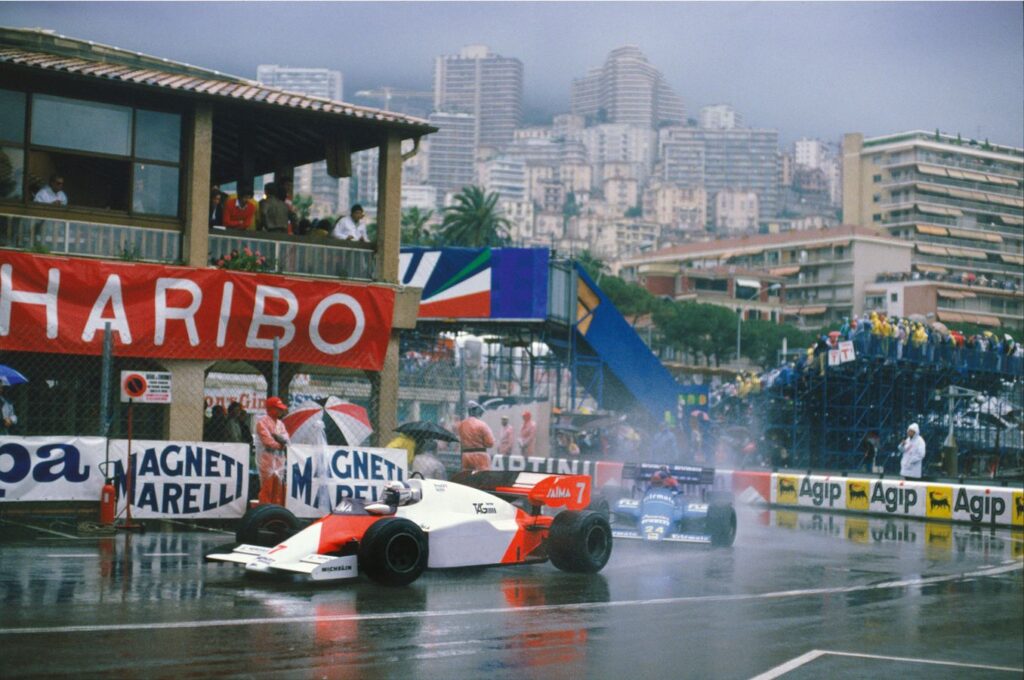Introduction
The Monaco Grand Prix is undoubtedly one of the most iconic and prestigious races in the world of motorsports. Held annually on the streets of Monte Carlo, the race has captivated fans and drivers alike for decades. With its glamorous backdrop, challenging circuit, and rich history, the Monaco Grand Prix has become a symbol of excellence and excitement in Formula 1 racing. In this article, we will delve into the fascinating history of the Monaco Grand Prix, exploring its origins, memorable moments, and the reasons why it continues to hold a special place in the hearts of racing enthusiasts worldwide.

- The Birth of a Legend
The Monaco Grand Prix traces its roots back to the early 20th century when the concept of racing on the streets of Monte Carlo first emerged. In 1929, Anthony Noghes, a prominent figure in the Automobile Club de Monaco, envisioned a thrilling race that would showcase the allure and elegance of the principality. Inspired by the success of the Monaco Rally, Noghes approached Prince Louis II with the idea of organizing a grand prix through the streets of Monte Carlo. His proposal was met with enthusiasm, and thus, the Monaco Grand Prix was born.
- The Inaugural Race
On April 14, 1929, the inaugural Monaco Grand Prix took place, marking the beginning of a new era in motorsport. The circuit, which snaked its way through the narrow and winding streets of Monte Carlo, presented a unique challenge to the drivers. The race was won by William Grover-Williams, driving a Bugatti Type 35B, cementing his name in the history books as the first-ever winner of the Monaco Grand Prix.
- From Glory to Tragedy
Over the years, the Monaco Grand Prix has witnessed moments of triumph and tragedy. In 1933, the race was won by the legendary driver, Tazio Nuvolari, who demonstrated remarkable skill and bravery on the demanding streets of Monte Carlo. However, the race was marred by a fatal accident involving René Dreyfus, underscoring the dangers inherent in street circuit racing.

- The Golden Era
The 1950s and 1960s marked a golden era for the Monaco Grand Prix. During this period, the race attracted some of the greatest drivers in Formula 1 history, including Juan Manuel Fangio, Stirling Moss, and Ayrton Senna. These iconic figures left an indelible mark on the race, thrilling spectators with their breathtaking skills and fierce rivalries. Notably, Ayrton Senna’s dominance in the late 1980s and early 1990s saw him achieve a record six victories in Monaco, further solidifying his status as a Monaco Grand Prix legend.
- Glitz, Glamour, and VIPs
One of the distinguishing features of the Monaco Grand Prix is the glamorous atmosphere that permeates the event. The race attracts a host of celebrities, royalty, and VIPs who flock to Monte Carlo to witness the spectacle firsthand. From the luxurious yachts docked in the harbor to the star-studded parties that take place throughout the weekend, the Monaco Grand Prix exudes an aura of exclusivity and opulence.
- Legendary Moments
The history of the Monaco Grand Prix is replete with unforgettable moments that have etched themselves into the annals of motorsport history. From Graham Hill’s five victories, earning him the moniker “Mr. Monaco,” to Michael Schumacher’s controversial collision with Damon Hill in 1994, each edition of the race has brought its fair share of drama and excitement.
- The Circuit and Its Challenges
The Monaco Grand Prix circuit is widely regarded as one of the
most challenging and demanding circuits in Formula 1. The narrow and winding streets of Monte Carlo present unique obstacles for drivers, testing their precision, skill, and nerve. With tight corners, elevation changes, and minimal room for error, the circuit leaves no margin for complacency. The iconic sections, such as the famous Casino Square, the tight hairpin of La Rascasse, and the tunnel, add to the mystique and allure of the race.
- Evolution and Modernization
Throughout its storied history, the Monaco Grand Prix has undergone several transformations and adaptations to meet the demands of modern motorsport. The circuit has been modified to enhance safety while still retaining its distinctive character. The addition of barriers, run-off areas, and improved infrastructure has brought the race in line with contemporary standards without compromising the essence of its heritage.

- Monaco Beyond the Race
While the Monaco Grand Prix takes center stage, the event is much more than just a race. It serves as a platform for showcasing the splendor and grandeur of the principality. The glamorous backdrop of Monte Carlo, with its opulent casinos, luxurious hotels, and stunning Mediterranean vistas, creates an atmosphere unlike any other. The race weekend is a celebration of style, sophistication, and high society, making it a magnet for the global elite.
- Enduring Legacy
The Monaco Grand Prix has etched itself into the fabric of motorsport history, transcending its status as a mere race. It represents a unique blend of sporting excellence, elegance, and tradition that has captivated fans for generations. The allure of the Monaco Grand Prix lies not only in its challenging circuit or prestigious winners but also in its ability to evoke a sense of nostalgia and romance. It is a testament to the enduring appeal of the race that it continues to draw massive crowds and command worldwide attention.
Conclusion
The Monaco Grand Prix stands as a testament to the power of sport to captivate and inspire. From its humble beginnings in the late 1920s to its current status as a global phenomenon, the race has become a symbol of excellence, glamour, and sheer excitement. The history of the Monaco Grand Prix is filled with triumphs, tragedies, and iconic moments that have forever left an imprint on the world of motorsport. As the engines roar through the streets of Monte Carlo each year, the Monaco Grand Prix continues to embody the spirit of racing at its finest. It remains an event that transcends boundaries and defines the very essence of Formula 1.

